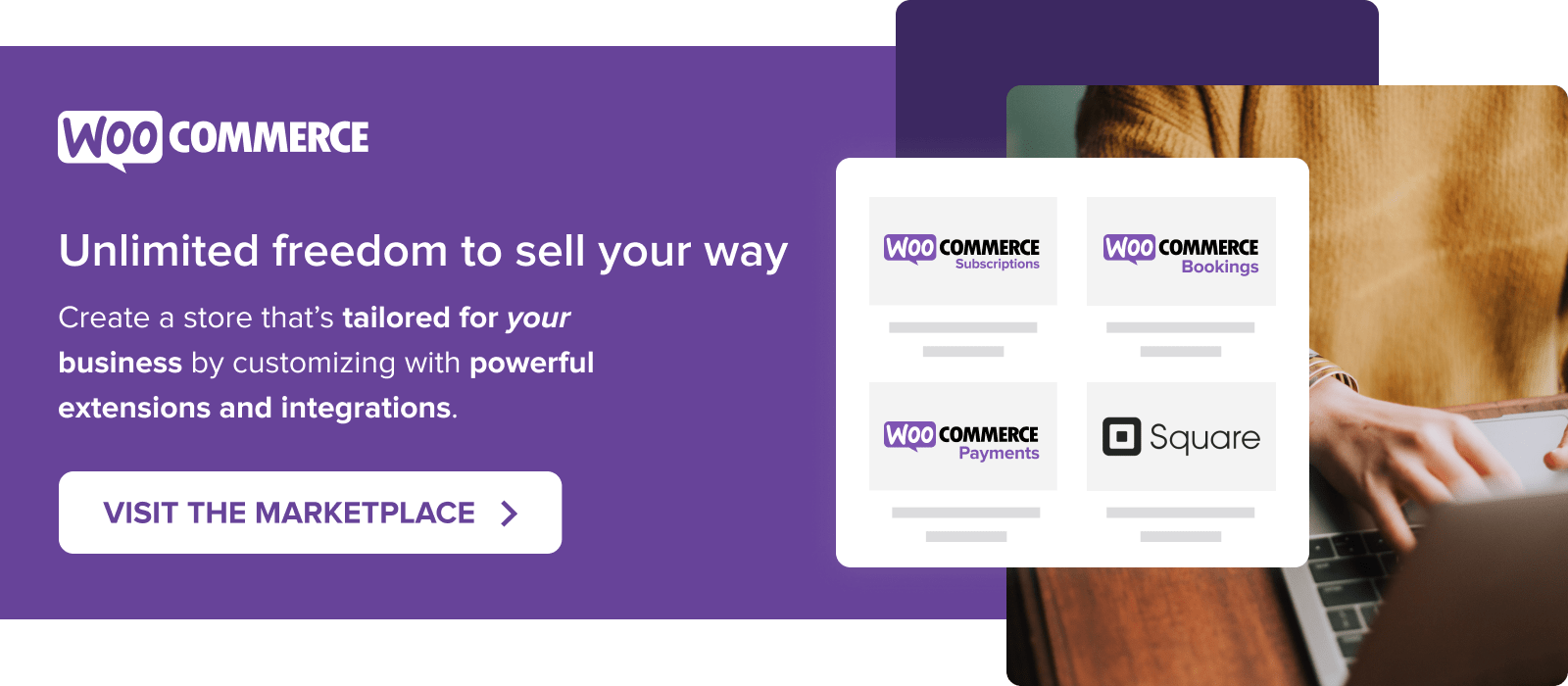If you’re the kind of business owner who wants full control over your future, you’re probably loving that aspect of running your store on WooCommerce. You get to determine how you present products, how you manage inventory, what kinds of payment methods you accept, and how all of the fulfillment and management processes work.
Yes, when you run your store on WooCommerce, you enjoy total control over almost every aspect of your business. What’s more, you can scale your company as much as you want. Still, if your store is thriving, you might be ready to grow your ecommerce business even further.
If that’s the case, it’s time to think about a multichannel ecommerce strategy. That means selling your products on more than one platform — like adding your listings to online marketplaces that already have built-in audiences.
In this post, we’ll get into the basics of selling on marketplaces. Then, we’ll share a complete guide on how to get started with multichannel retail.
Selling on marketplaces
As we mentioned, selling on marketplaces is crucial when it comes to developing a multichannel ecommerce strategy. So, let’s first go over the fundamentals.
Why sell on a marketplace?
The answer is simple — growth potential. When you sell on a variety of platforms, you open up your store and products to a whole new group of customers.
Selling on a marketplace vastly broadens your audience, thereby increasing your opportunities to make sales. That’s because in recent years, online shoppers have been flocking to marketplaces like Amazon.
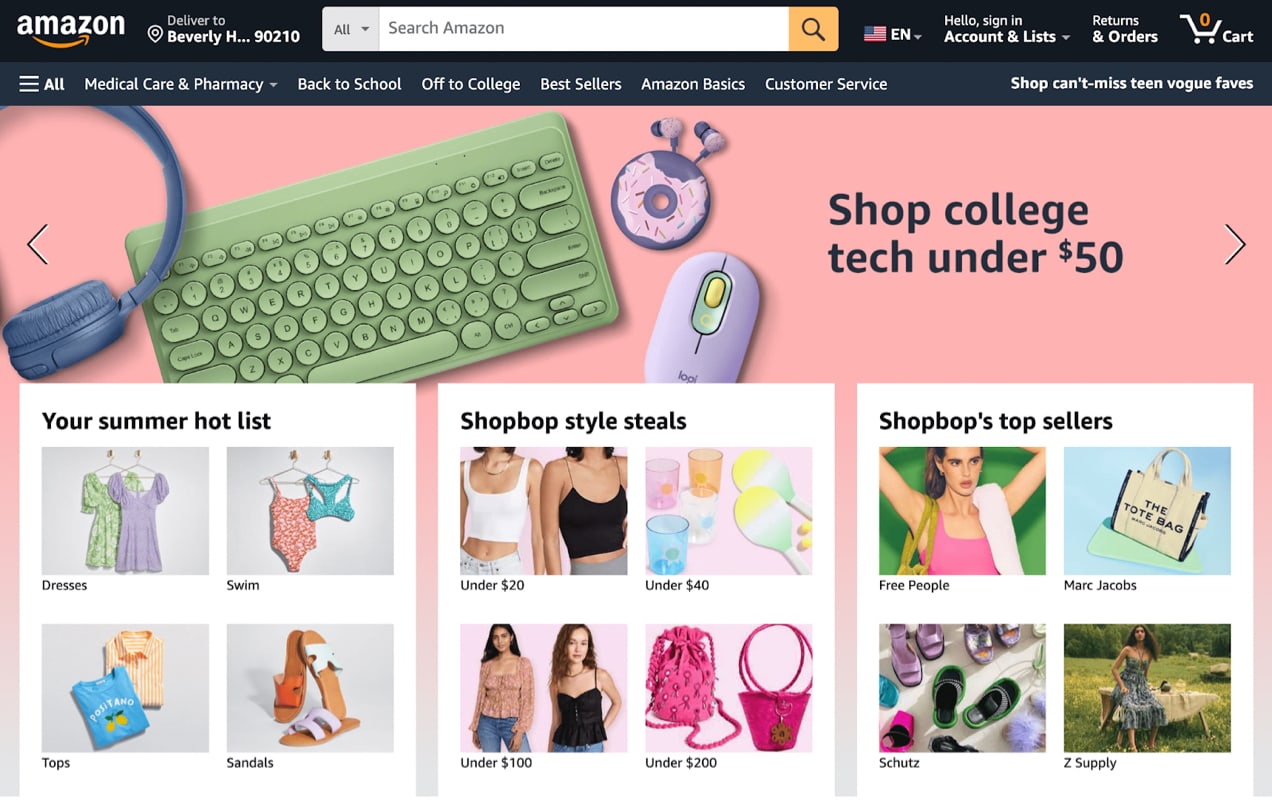
In fact, research shows that online marketplaces account for 47 percent of global ecommerce sales. This is likely due to the fact that they’re more convenient than single-merchant stores.
Think about it: Why would you want to make three separate online orders to buy a backpack, lunchbox, and winter coat when you can find them all in one place?
What’s more, some shoppers may feel safer ordering from an online marketplace. They might be more familiar with its customer service, mobile app, return policies and procedures, etc.
On top of all that, advertising on online marketplaces may be more effective because you’re able to target warm leads who are searching for something like your product. This model can enable you to increase your sales in a scalable and predictable way.
Deciding on the right marketplace for your business and products
Now that you know why you should expand your business to a marketplace, let’s look at how to choose the right platform to sell your products.
As you probably know, Amazon and eBay are some of the biggest marketplaces on the web. AliExpress is another popular platform among online shoppers.
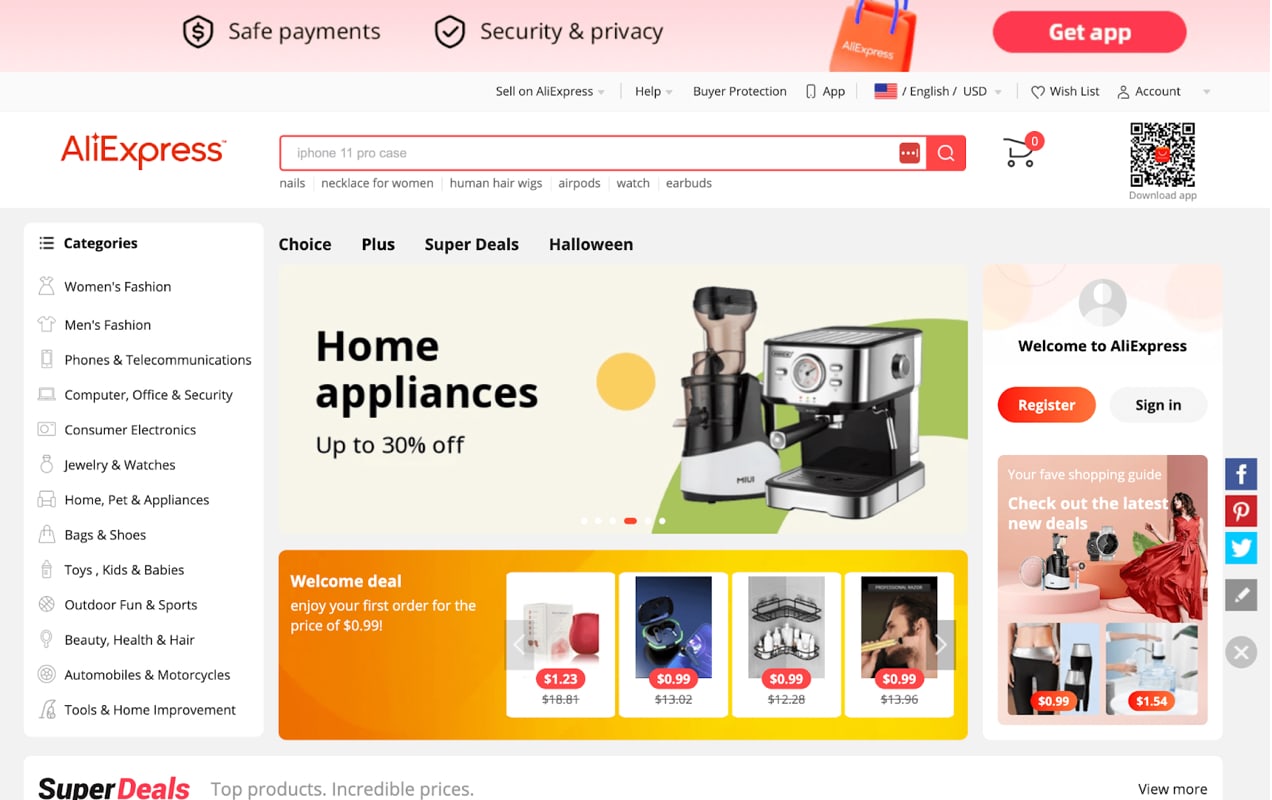
It may be tempting to simply sign up for the marketplace that’s most familiar to you, but that might not be the best idea.
You’ll want to take the time to assess your product and business, and where your goods will be most likely to sell. With this in mind, consider the following questions when deciding on a marketplace:
- Are consumers already looking for your product (or something like it) on the marketplace?
- What do your products bring that’s unique to the marketplace?
- Can you meet the customer delivery and return expectations?
- How well can you compete on core search terms?
- Can you meet the customer support expectations of the marketplace?
- Will it be easy for more experienced merchants to copy your products and undercut you on price?
Additionally, you will want to think about whether you’ll still have an adequate profit margin after you’ve deducted the cost of marketplace fees, advertising, and shipping/delivery.
“It’s essential to scrutinize the fee structure to ensure profitability, while also evaluating the level of competition to gauge market saturation. Technical integration capabilities, from inventory management to customer data synchronization, should not be overlooked. Additionally, the platform’s potential for brand visibility, its customer service requirements, and its review and ratings system are pivotal factors that can significantly impact a store’s success. Lastly, scalability should be considered to ensure the platform can accommodate future growth, making it not just a choice for today, but also a strategic decision for tomorrow.”
— Bryan Falla, Director of Marketing at GoDataFeed
Thoughtfully answering these questions will help you determine whether selling your products on a marketplace is a viable option. Your answers will likely differ slightly from one platform to another, and this should help inform your decision.
Getting started on the marketplace
After you’ve decided on the right marketplace to sell your products, you might be wondering how to get started. Let’s go over some key considerations.
Product listings
First off, you’ll want to carefully curate the products you include on the marketplace. You might want to start off by listing products that you think will be most successful, or your most niche items that will be less likely to face a lot of competition.
You might also think about how you’ll be able to gain traction for your products. As an example, you could run a promotional campaign, providing discounts and deals to celebrate your launch on the marketplace.
“A strong product listing has good photos and videos showing the product in use. Clearly explain what’s included and provide accurate dimensions so buyers know exactly what they’re getting.”
— Daniel Sodkiewicz, CTO at GeekSeller
Keep in mind that selling on a marketplace is an experiment of sorts. You’ll likely end up modifying your listed products regularly — and that’s okay!
Product inventory and management
Once you have an idea of what products you’d like to list on your marketplace of choice, you’ll want to take a look at your inventory. Consider the level of inventory you’ll need to maintain in order to prevent running out of stock.
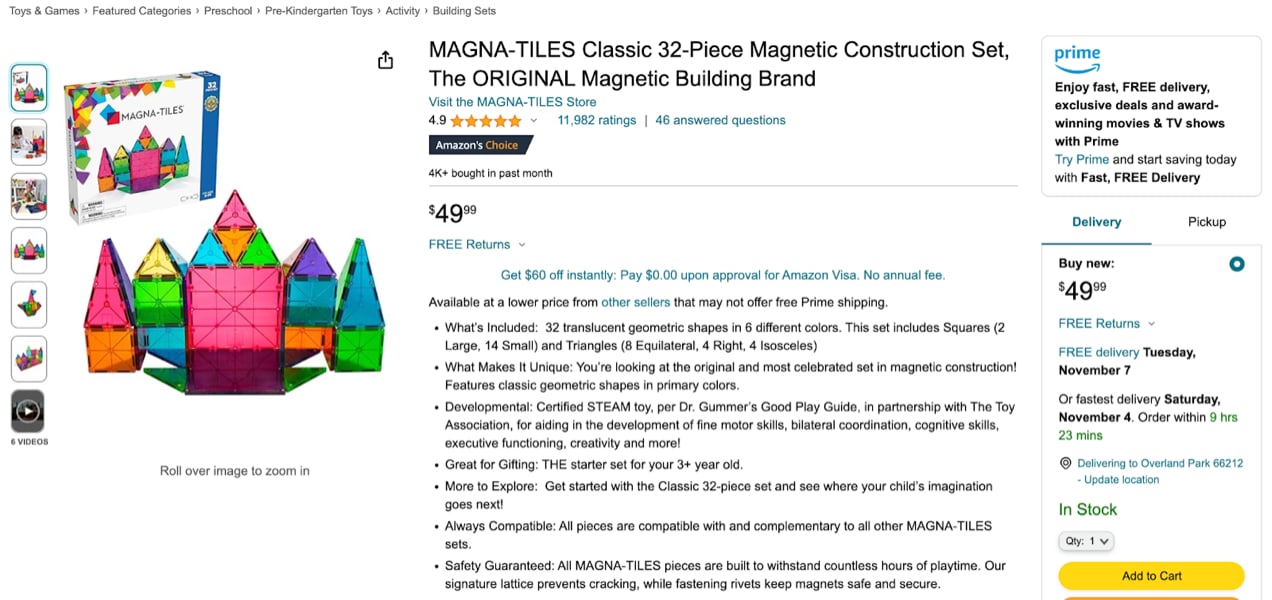
This can be hard to predict, so you might want to err on the side of caution, slightly overstocking products that have been popular in the past.
Additionally, you’ll need to figure out how you’re going to manage your product inventory when managing multiple sales channels.
You can do this with multichannel listing software or directly through your WooCommerce store with the right extension. If you’re already benefiting from your independently-owned presence on WooCommerce, this is the ideal choice. The Amazon for WooCommerce and eBay Integration for WooCommerce extensions are two tools to consider for your online store.
Shipping and overseas orders
As we mentioned previously, one of the benefits of expanding your online business to a marketplace is that it helps you attract a bigger audience.
If you’re currently selling on a local or regional level, going national could be a huge step for your business. If you’re already selling at the national level, you might be hoping to accept overseas orders.
This can be an excellent way to quickly grow your revenue, but you’ll want to ensure that you have all the right mechanisms and procedures in place to accept international orders. For example, if you want to accept orders from Europe, you should be able to handle any additional fees charged by the marketplace — like a cross-border transaction fee.
More importantly, you should research how your marketplace can help facilitate the international shipping process. That’s because most countries will require purchases to go through customs clearance.
Even if you aren’t planning on selling overseas, you’ll want to carefully consider the shipping and delivery process. When you broaden your scope by any degree, it can become a lot more complicated and expensive.
To put it simply, make sure to do your research and verify that you can meet customers’ delivery demands. Remember, if your products get lost in the mail or aren’t delivered in a timely manner, this could damage your brand’s reputation and hurt your business overall.
Competing on the marketplace
There are many benefits to selling on a marketplace, but there are also a few drawbacks, like heightened competition. If you’ve ever shopped on Amazon or Alibaba, you’ve probably experienced this firsthand.
When you search for a product, you’re met with page after page of your desired item, all from different vendors. So, you’ll want to start thinking about your marketplace competition right away.
Consider the following when figuring out how to be competitive on the marketplace:
- Product listing optimization. Optimizing all your product listings both for SEO and the marketplace can help more people see your products. Optimized product listings should include relevant keywords and rich media. They should also be well-organized and easy to scan.
- Customer reviews. Product reviews play a key role in most marketplace shopping experiences. That’s because they build trust and boost your perceived legitimacy and credibility for shoppers. Therefore, you’ll want to think about how to manage any negative reviews and whether you’ll respond to positive ones.
- Marketplace scorecard. Some marketplaces use a “vendor scorecard”. If you have this available to you, it’s a good idea to monitor it.
- Marketplace competition. If you want to be competitive, keeping an eye on your competition is always wise.
- Sales performance. Of course, you’ll want to track the trajectory of your sales and if you’re on the way to making this a profitable effort within a viable timeframe.
- Product inventory. Your marketplace sales may fluctuate, which could lead to unexpected changes in stock. Develop a backup plan or establish a process for what to do when your stock is low or totally depleted.
In addition, some marketplaces offer unique programs for advertising. Read up on any special offers you can use to your advantage.
A beginner’s guide to multichannel ecommerce strategy
Now that we’ve covered the basics of selling on marketplaces, we’re going to walk you through an in-depth guide on how to develop a successful, multichannel ecommerce strategy. This way, you can incorporate marketplace retail into your overall business model.
As you read through this guide, keep the following tips in mind from Bryan Falla, Director of Marketing at GoDataFeed: “One of the cornerstones of a solid multichannel strategy is data consistency across all platforms, ensuring a coherent brand message and product information. However, this uniformity shouldn’t be mistaken for a one-size-fits-all approach; each channel has its own set of rules and audience behaviors that require a tailored strategy. Understanding the customer journey is not merely an exercise but a necessity for branded messaging tailored to audiences and their specific touchpoints.”
An introduction to multichannel selling
Before we get into the nitty-gritty details of creating a multichannel ecommerce strategy, let’s take a closer look at what it means.
“Multi” comes from Latin, and means “much” or “many”. So, multichannel retailing refers to selling your products on more than one ecommerce channel.
This is a bit similar to omnichannel retail (not to be confused with omnichannel marketing), but when developing an omnichannel retail strategy, sellers focus on integrating every possible offline and online channel no matter the location and preferred medium a customer uses.
So, an omnichannel approach might include a WooCommerce store, multiple online marketplaces, and brick-and-mortar locations. Large retailers and smaller organizations that focus heavily on in-person sales would be most likely to consider an omnichannel approach.
Otherwise, if you’re looking to stay completely online, a multichannel approach is where you should focus your efforts. Typically, this means selling on marketplaces like discussed in this article, but it could also mean branching out to sell on social media or other online avenues.
So, unlike omnichannel retail where you seek to be everywhere‚ including offline channels, a multichannel ecommerce strategy is limited only to the internet and can be as complex or simple as you’d like. For instance, if you sell on your WooCommerce store and on Amazon, that still counts as multichannel ecommerce.
The benefits of multichannel selling
Curious about the benefits of multichannel selling? Here are some of the major advantages:
- Increased visibility. When you adopt a multichannel selling approach, your business can reach a wider audience.
- Improved customer experience. When your business is on multiple platforms, you can more easily cater to different customer preferences. As a result, customers may come away with a more favorable impression.
- Better risk management. Diversifying sales avenues can help insulate your business from the risk of relying on a single platform. Essentially, it can safeguard your ecommerce store from “dry spells”, providing a more consistent revenue stream.
- Higher sales. A well-implemented multichannel strategy enables sellers to create a seamless and cohesive shopping experience for customers, ultimately converting leads into sales and promoting customer retention.
To put it simply, adopting a multichannel retailing approach can help grow your business and boost your profits.
Identifying the right sales channels for your business
Once you’ve learned about the benefits of multichannel ecommerce, you might be more inclined to try out this approach. One of the first steps in adopting a multichannel strategy is identifying the right sales channels for your business.
We’re now going to explore some of the most popular sales channels for a multichannel strategy. This way, you’ll be better equipped to decide on the right one for your business. We’ll discuss some of their most important seller features and benefits, but keep in mind that one of the major deciding factors should be audience and product viability.
So, here are some of the best sales channels for a multichannel strategy. It will likely come as no surprise that nearly all of them are some sort of online marketplace.
Amazon
According to Statista, Amazon is the most popular online marketplace (by far), averaging about 4.8 billion visits per month.
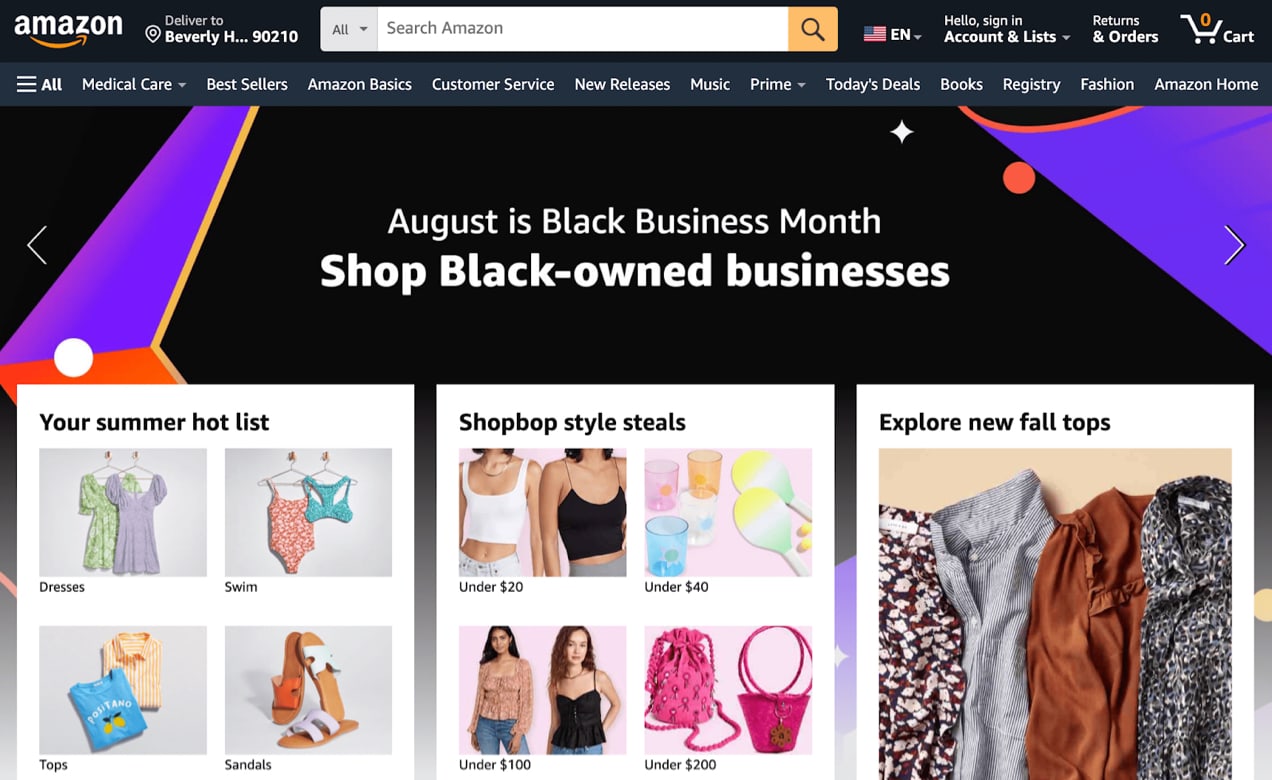
With traffic numbers like these, Amazon can be a tempting marketplace to sell on, especially if you offer products that appeal to a wide range of people.
Plus, since Amazon is such a well-established and successful marketplace, it’s able to offer tons of useful programs to help merchants succeed. For example, you can build your brand with a brand registry, outsource your logistics, and ship worldwide.
Amazon can even provide multichannel fulfillment services to help streamline the entire process.
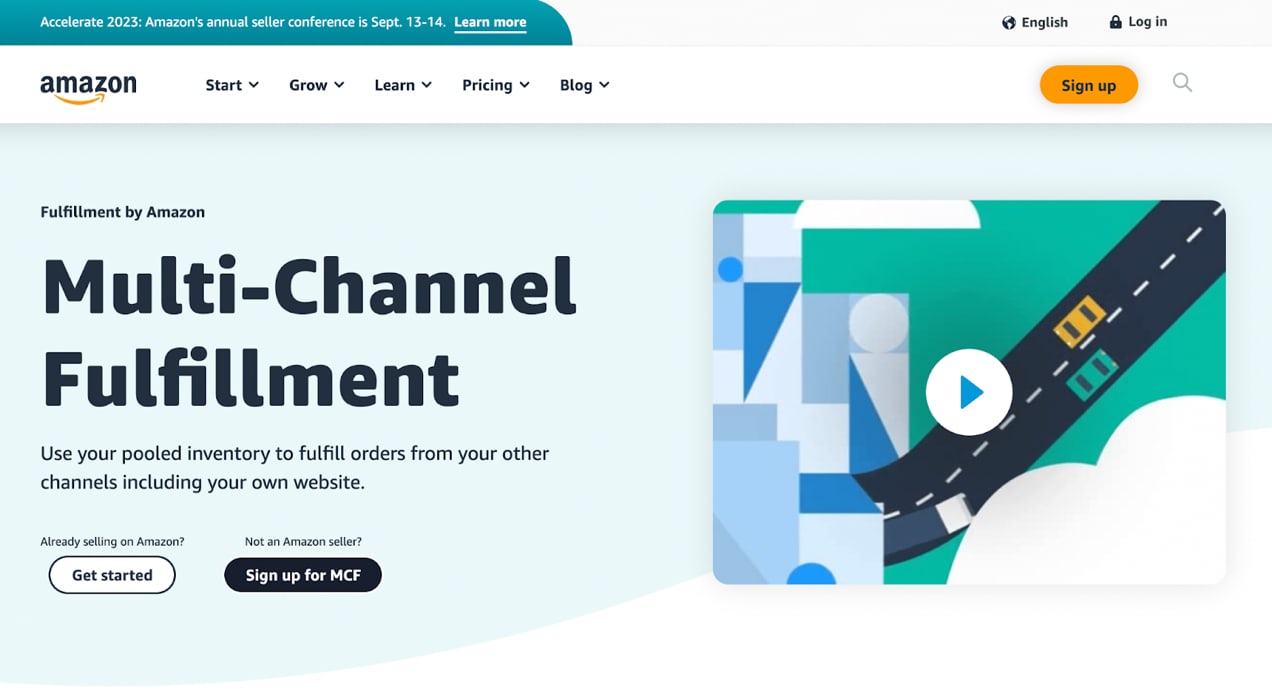
This program is ideal for WordPress entrepreneurs since Amazon MCF integrates seamlessly with WooCommerce. You’ll just need to install the Amazon Fulfillment (MCF) extension.
Still, it’s important to keep in mind that Amazon is highly saturated with products. That means it’s likely to be fiercely competitive. You must ensure that your products can stand out from the crowd before investing too much time and energy into this platform.
Learn more about selling on Amazon.
eBay
eBay is the second most visited online marketplace after Amazon. According to Statista, it receives more than 1.2 billion visits per month.
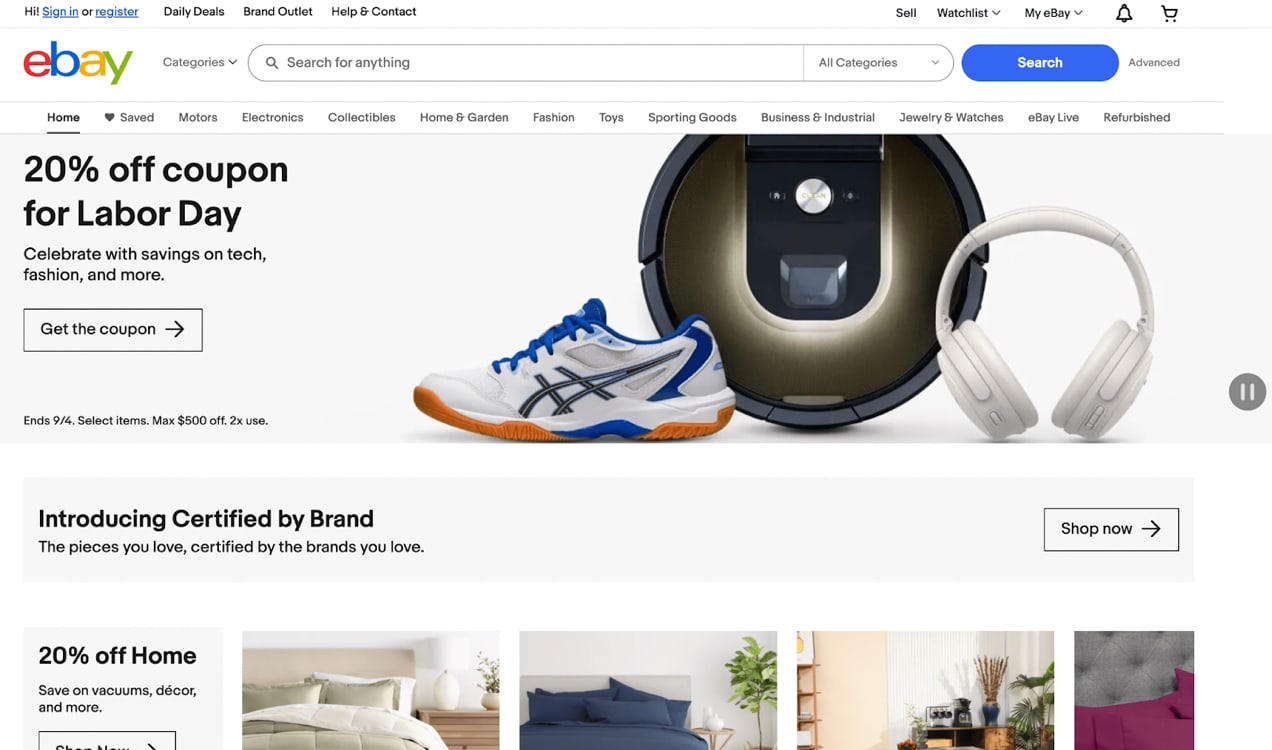
So, it may be worth considering when you’re choosing platforms for your multichannel strategy.
When you start selling on eBay, you’ll get access to the native Seller Hub and its Seller Tools. Plus, if you run your online store using WordPress, you can install the eBay Integration for WooCommerce extension to manage your product listings.
Still, when you’re deciding on a sales channel, one of the most important factors to consider is the target audience. Whereas Amazon caters to almost any type of product and shopper, buyers on eBay may be a little more niche.
As an example, more than 16% of products listed on eBay fall into the “Electronics & Accessories” category and about 20% are used goods.
Etsy
Next we have Etsy. This marketplace receives nearly 450 million monthly visitors.
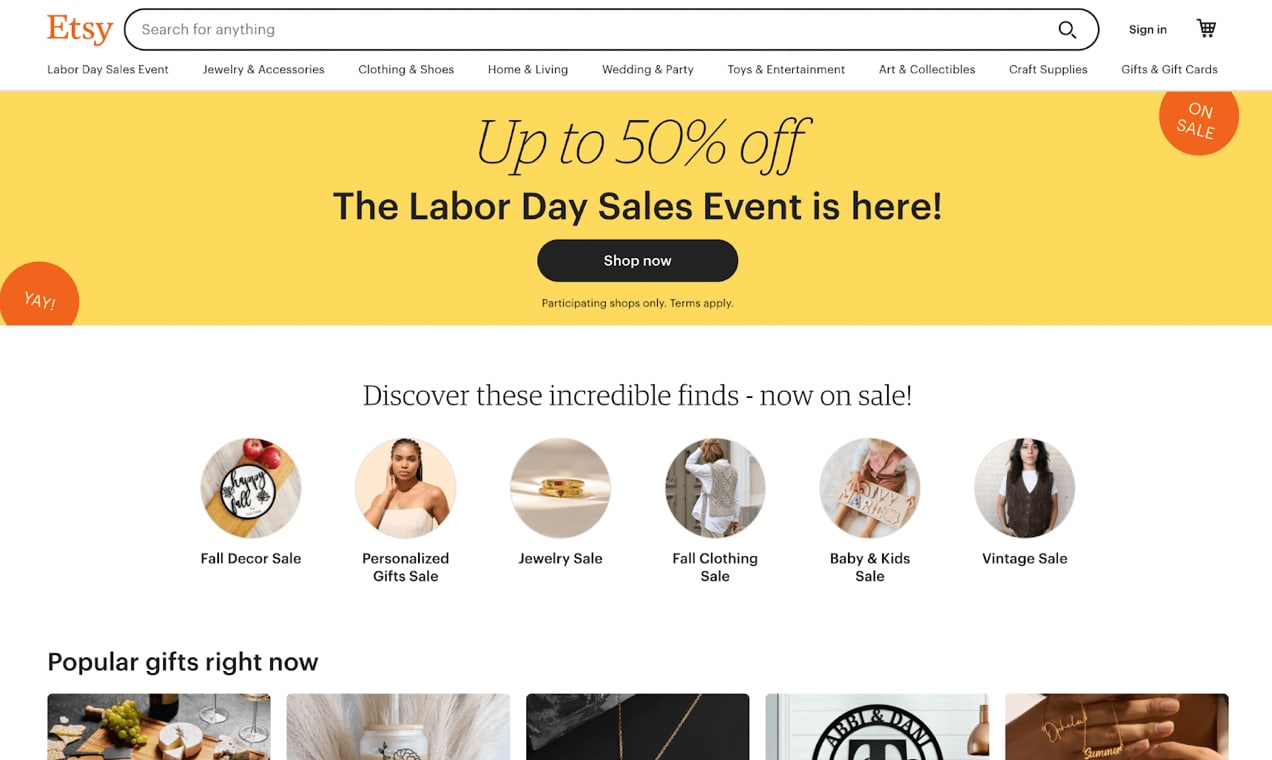
Etsy is particularly suited for creative sellers. That’s because it’s known for hosting vintage or handmade items like jewelry. Also, Etsy sellers often offer customizable options.
Naturally, this is a good choice if you specialize in any of those product types. There’s also an Etsy Integration for WooCommerce which can help WooCommerce users manage products, orders, shipping, and more.
Walmart
With more than 400 million monthly visitors, Walmart is another strong option among the top ten most popular online marketplaces.
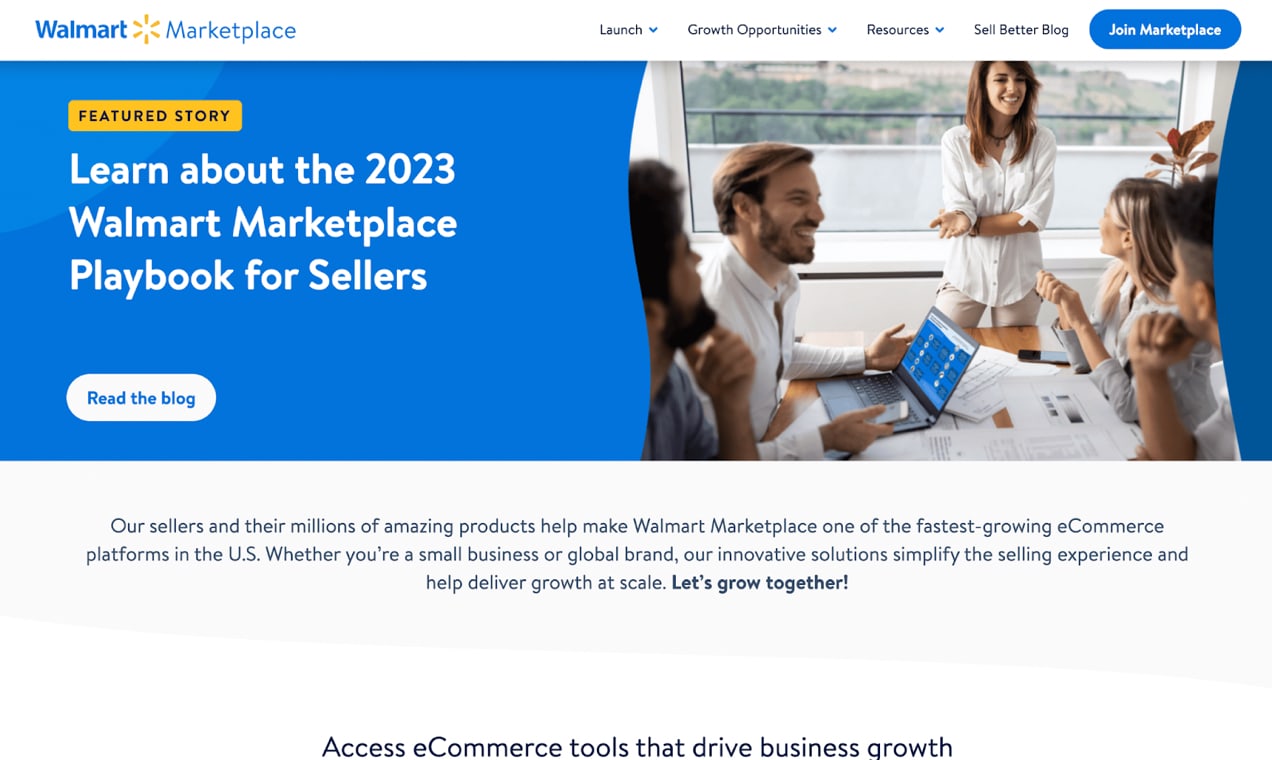
Like Amazon, Walmart offers a robust list of programs and tools for sellers. For instance, it can help you scale with paid search advertising. Additionally, Walmart sellers get access to a brand portal and enhanced returns.
Furthermore, selling on Walmart is definitely possible for many North American retailers, thanks to the Walmart Integration for WooCommerce and the Walmart Canada Integration for WooCommerce extensions.
Google Shopping
Now, let’s consider Google Shopping as a potential sales channel.
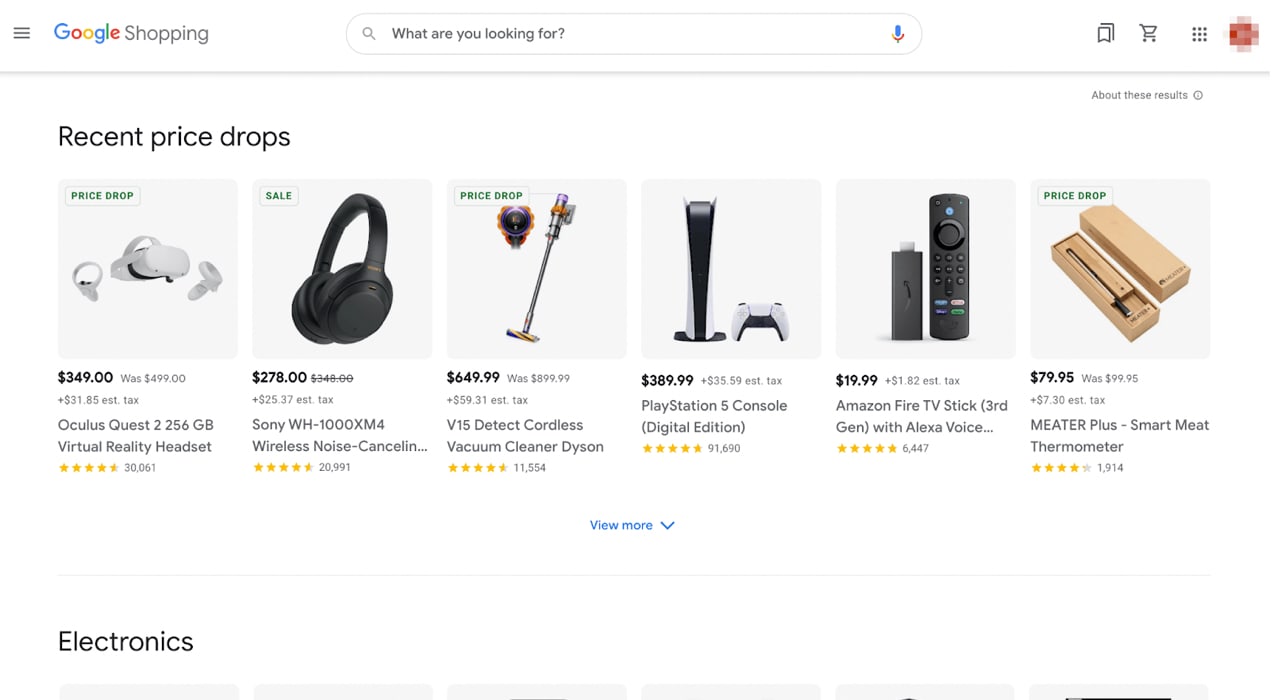
While you might think that Google Shopping is relatively new, it’s actually been around since 2002. It’s just evolved a few times since then. It was initially called “Froogle” and later became known as “Google Product Search”.
Unlike the other sales channels we’ve mentioned so far, Google Shopping isn’t a true marketplace. It’s more like a directory where you can compare products from different channels.
This ecommerce platform offers a powerful way to grow your business because Google Shopping results can appear alongside Google’s regular search results.
Still, if you want your products to be featured here, you’ll need to add them to Google Shopping. This can be done with the free WooCommerce extension, Google Listing & Ads.
Other popular marketplaces
Up until now, we’ve covered some of the major players in terms of sales channels, including Amazon, Etsy, and Walmart. Still, there are a few more online marketplaces worth exploring.
If you’re interested in getting attention from an international audience, AliExpress may be a good option for your multichannel strategy.
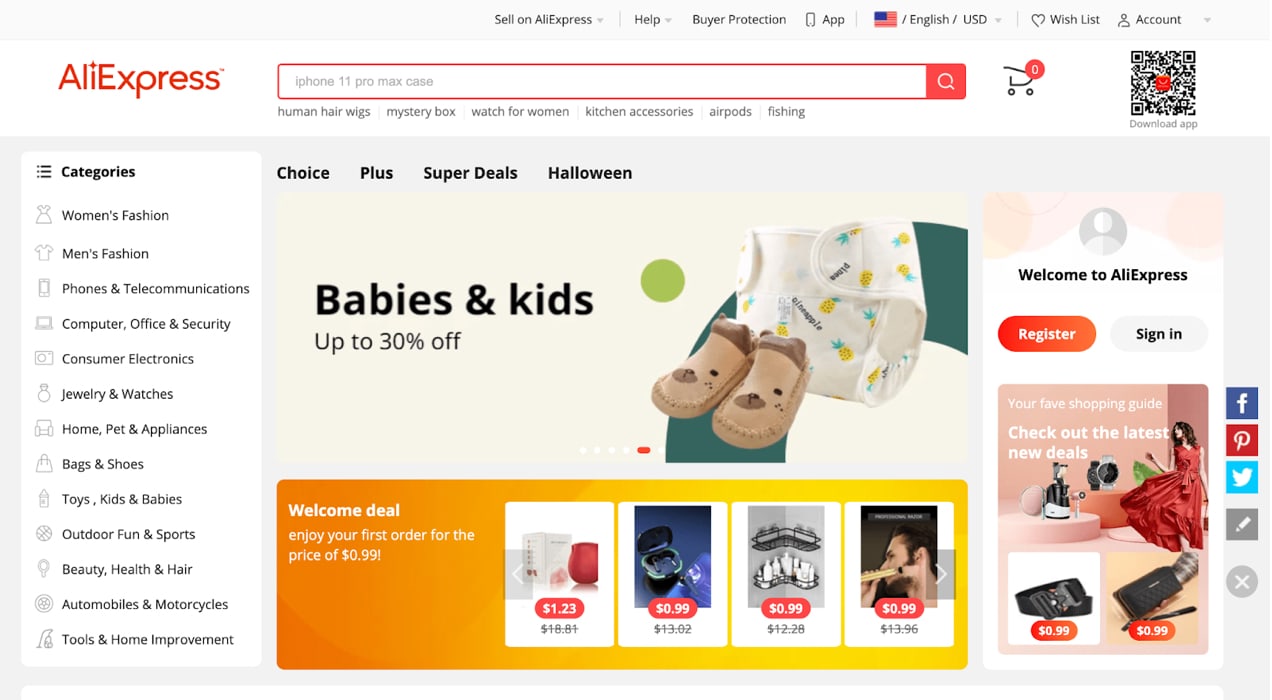
Owned by Alibaba, this Chinese marketplace is wildly popular. In fact, AliExpress typically gets at least 400 million visits per month. AliExpress is also very popular for dropshipping businesses.
Meanwhile, Shopee can offer you traction in Southeast Asia and Mercado Libre may be ideal if you want to expand into the Latin American market.
Social platforms
In recent years, social commerce has become very popular. So, let’s consider some sales channels that are built on social media sites.
Facebook offers both Facebook Marketplace and Facebook Shops.
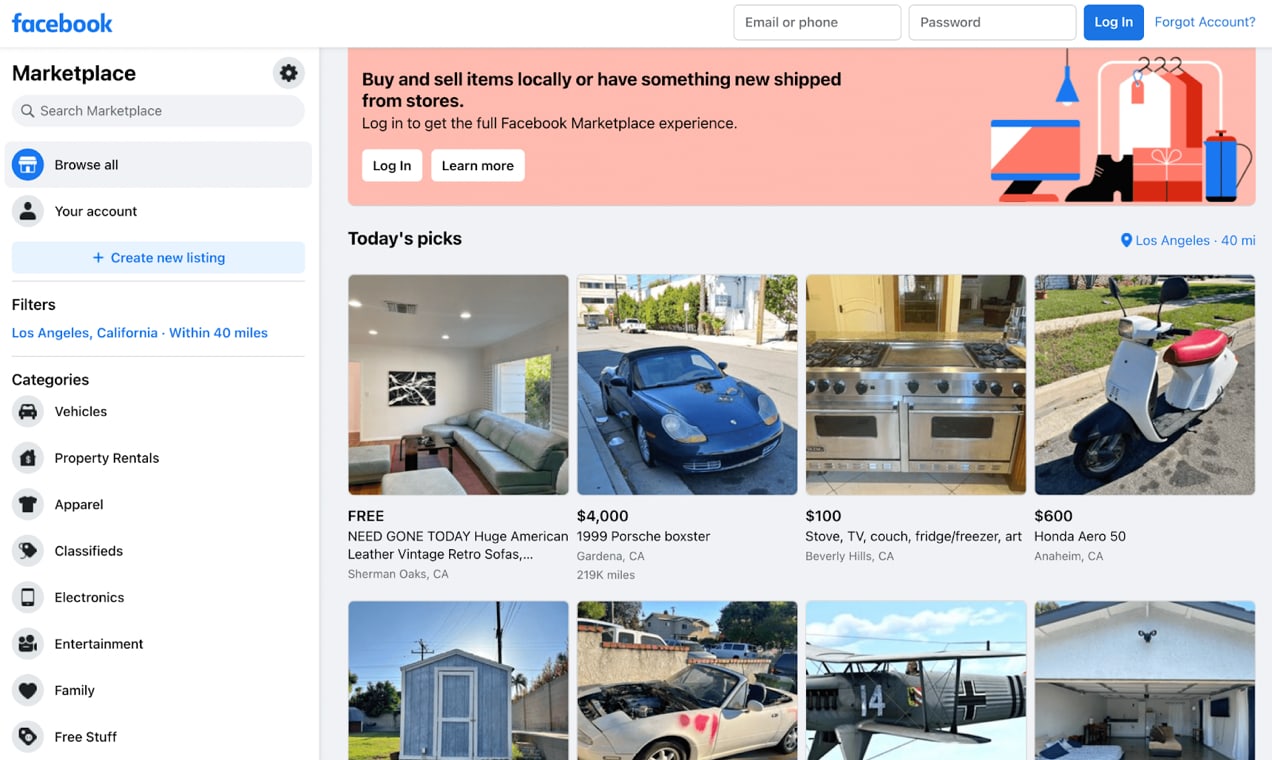
Marketplace can be used by anyone with a Facebook account. But official stores can also take advantage of this platform, which offers robust paid advertising features.
Facebook Shops, on the other hand, functions a little differently. It enables you to create a digital storefront across all the Meta apps, including Instagram and Facebook.
Meanwhile, TikTok offers TikTok Shop as an ecommerce solution.
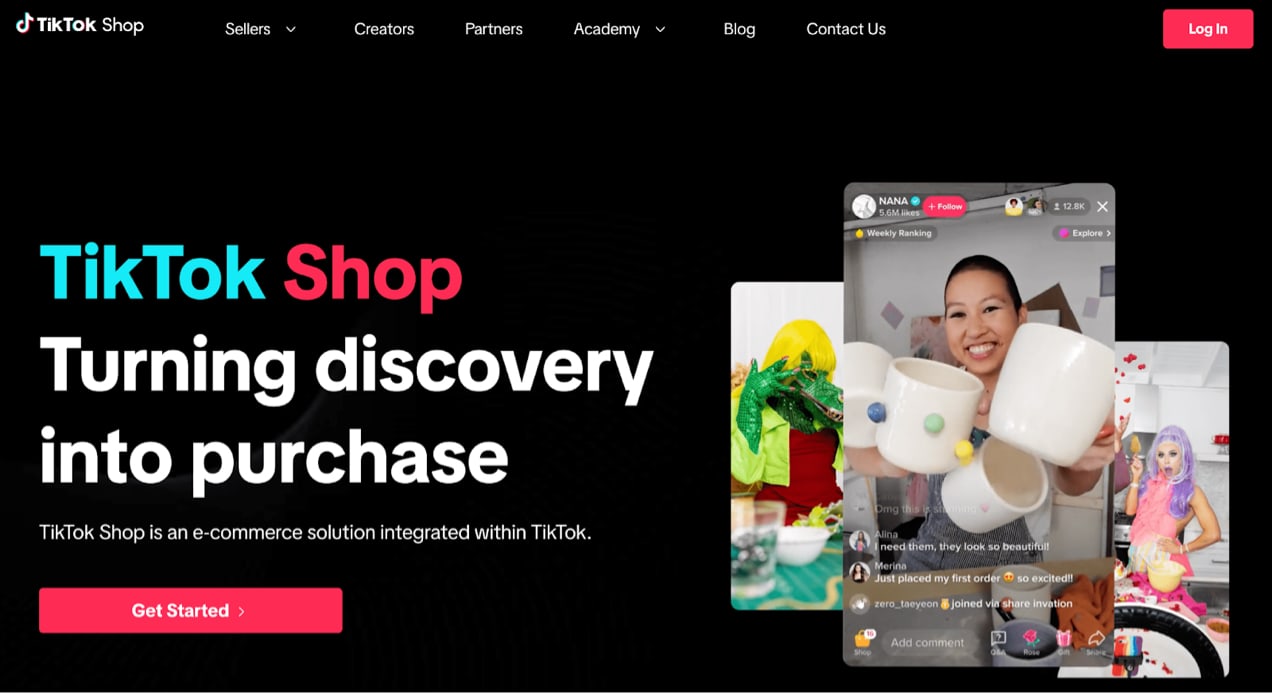
This may be ideal for smaller businesses or even solopreneurs. You can also use the TikTok for WooCommerce extension (which is free!) to showcase and sell your Woo products and create advertising campaigns.
If your products lend themselves well to visual marketing, you might consider selling your products on Pinterest.
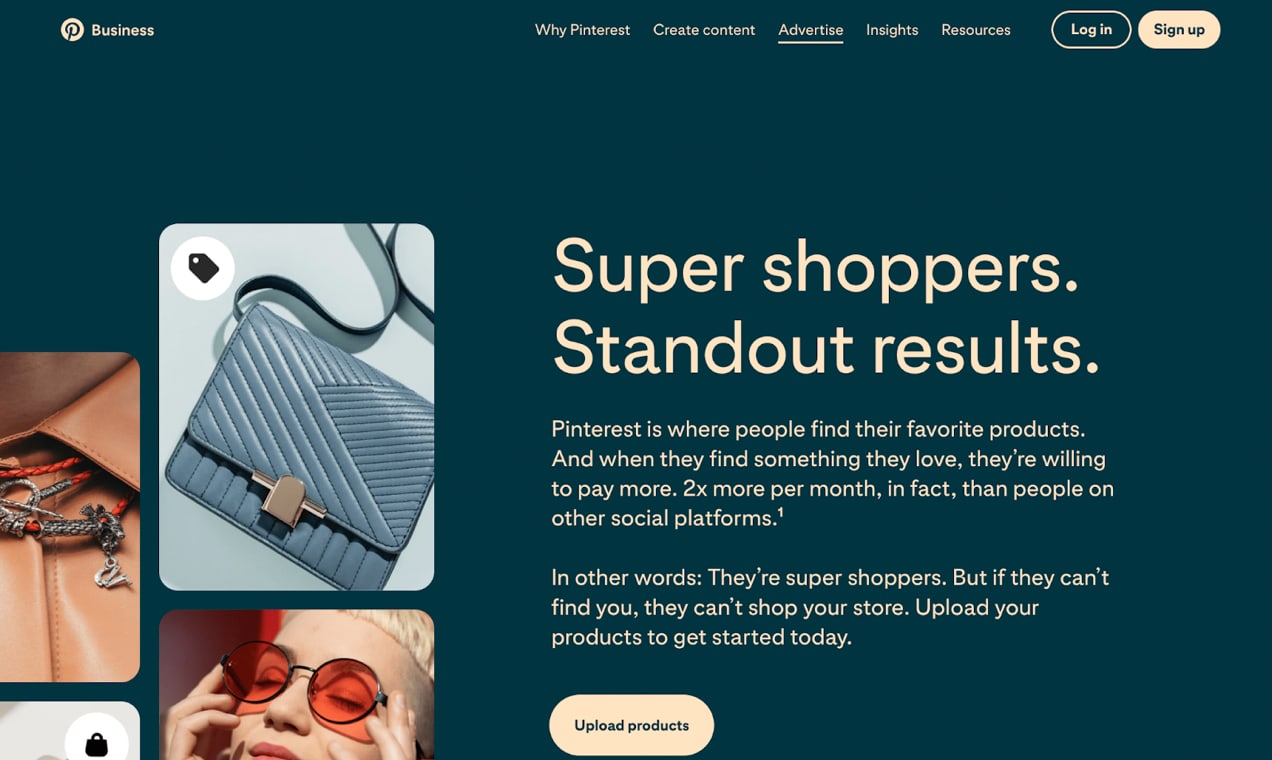
You can easily connect your Woo store using the Pinterest for WooCommerce extension.
How to succeed with multichannel selling
Now that you have a good sense of your options when it comes to online marketplaces, we’re going to share seven tips to help you succeed when selling on multiple channels.
1. Optimize product listings
To be competitive on any sales channel, you’ll need to optimize your product listings for both search engines and any native search tool the platform or marketplace offers. Otherwise, your items likely won’t get any traction.
Since nearly all online marketplaces are “search” based, shoppers simply have to type a keyword or phrase into the native search tool to look for products. Then, they’re met with pages upon pages of product listing results, all from different merchants.
Search engine optimization (SEO) is important because online shoppers may also use key terms in traditional search engines and get results that lead to a marketplace.
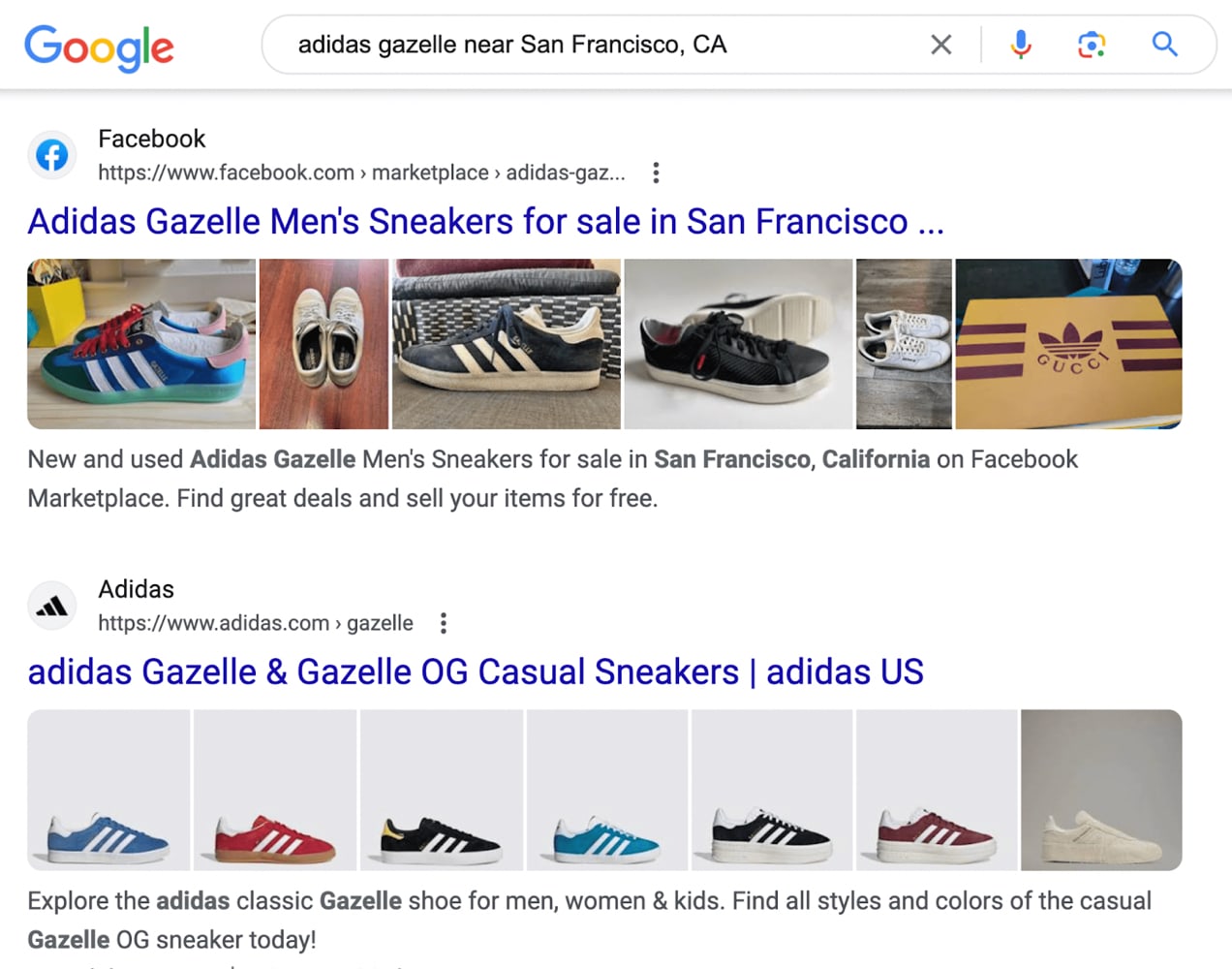
So, for starters, you’ll want to identify keywords for your products. You can use the Keyword Planner within Google Ads to conduct your research.
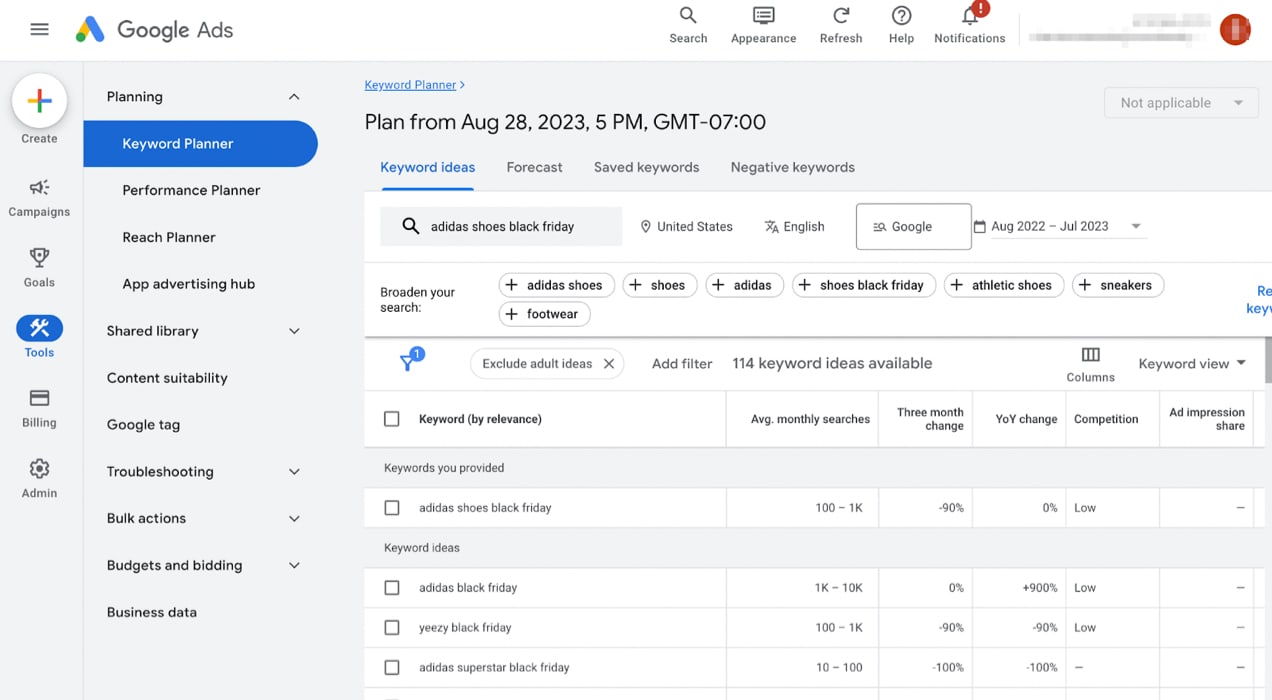
Ideally, you’ll want to identify keywords and phrases with a high search volume and low competition. If you’re struggling to find viable keywords, try getting more specific. Long-tail keywords (3-5 words in length) are often less competitive.
You can then incorporate these keywords into your product descriptions. This way, your product listings will have better chances of appearing in top search results.
Just remember, that when drafting your product descriptions, you must also focus on providing information that’s helpful and convincing to readers. If you write only for search engines, you still won’t garner sales.
You can apply many of the same principles of winning product pages for your WooCommerce store to your marketplace listing.
Finally, remember that search engine optimization is an ongoing and long-term strategy. Don’t get disappointed if results take a while.
2. Include high-quality product images
There’s much more to product listing optimization than keywords. You’ll also want to include high-quality images of your products or rich media like videos.
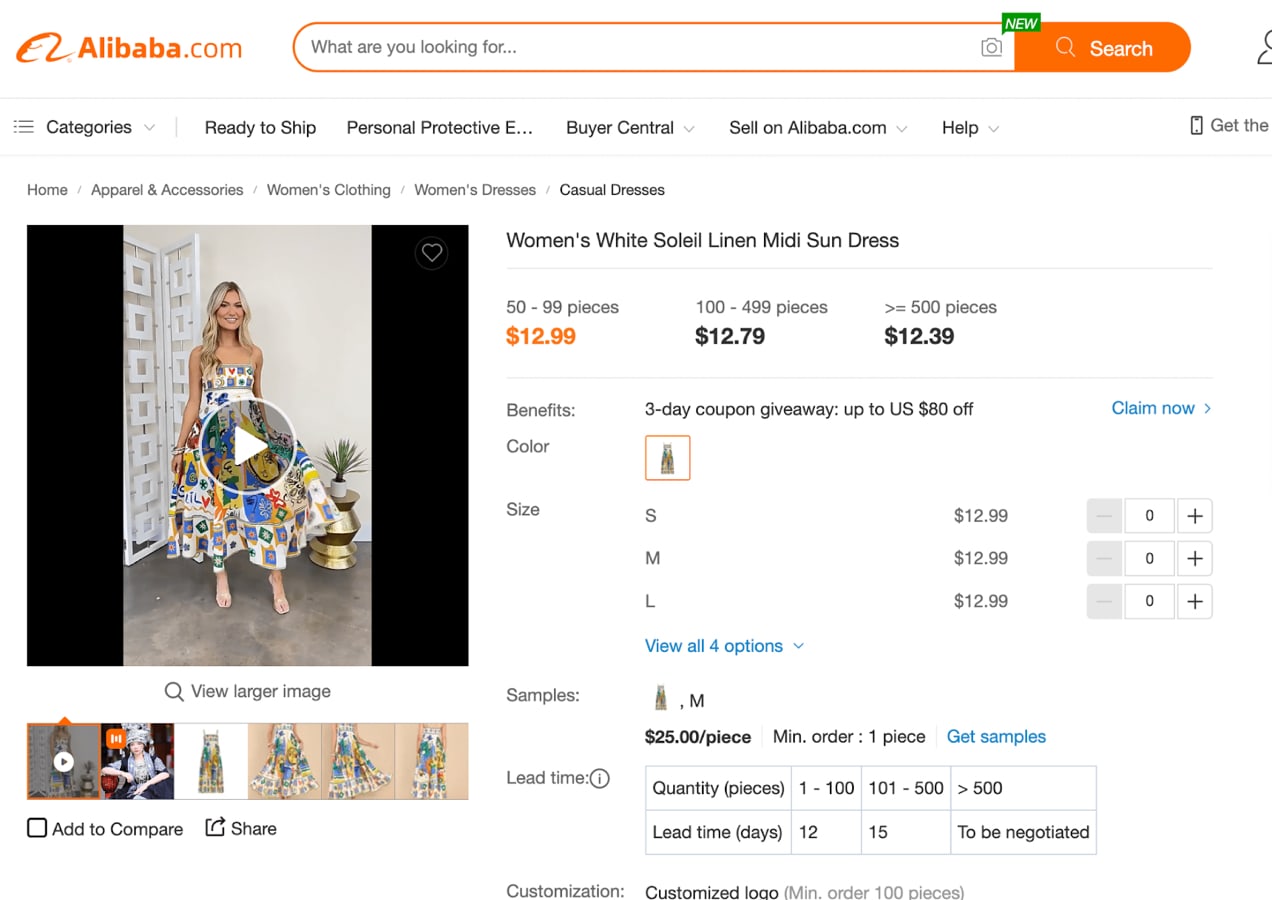
It’s a good idea to include photos of your products from different angles. You’ll also want to include close-up shots of the material or fabric. This is particularly important if you sell items like clothes and home decor.
3. Offer competitive pricing
Another way you can encourage retail conversions on crowded marketplaces is by offering competitive pricing. This can help your items stand, especially when shoppers are filtering results by cost. Still, you’ll want to be careful when pricing your products competitively.
You can start by monitoring competing products on the marketplace and analyzing their pricing strategies. Then, you can adjust your prices to remain competitive without sacrificing profitability. When doing this, you’ll want to take into account any overhead costs like fees, commissions, taxes, shipping, etc.
If you crunch the numbers and you realize you don’t have the budget or the stability to offer lower prices, you might consider this strategy for a limited time (e.g. offering “launch” pricing). This can help you achieve early sales and build reviews as a new store. Once you have traction you could implement a more profitable pricing strategy.
Alternatively, you can try the next strategy on the list.
You’ll need to consider how pricing your products on marketplaces might impact direct sales on your website. If potential customers discover lower prices on a marketplace, they may opt to purchase from there instead and you’ll not only sell your items for a lower price, but you’ll also have to pay commissions. For this reason, some merchants sell slightly different packages or versions of products on the marketplace to justify variations in pricing.
4. Participate in promotions and deals
If you don’t have sufficient profit margins to permanently reduce your prices, another option is to participate in promotions and deals, which take place frequently on most online marketplaces.
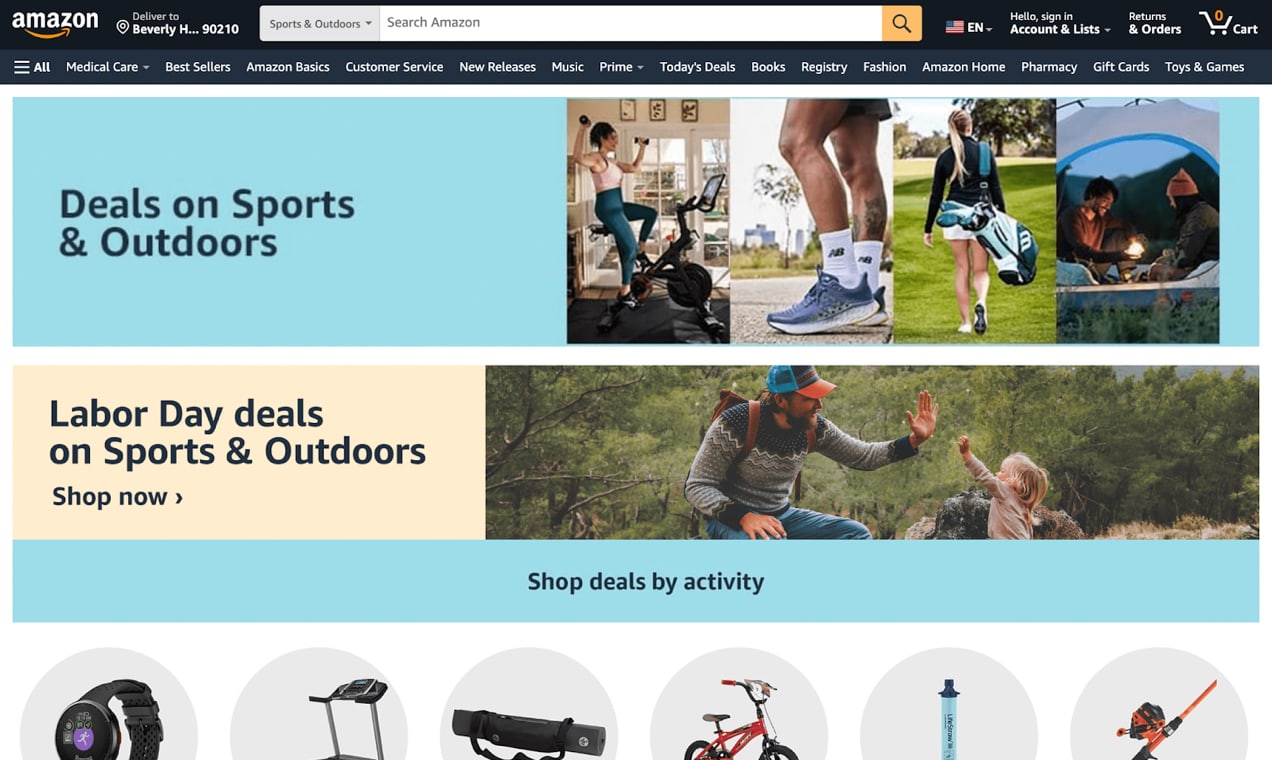
You can take advantage of holiday sale opportunities for events like Labor Day, Black Friday, etc. Joining these events can significantly boost your product’s visibility and sales while attracting price-sensitive customers in the process.
Later, when your brand is better established on the sales channel, you might not want to participate in all of these promotions. But, it can be a good strategy when you’re first getting started.
5. Focus on customer service
For many, one of the major benefits of shopping with a larger company or marketplace is being able to count on reliable customer service. So, if you want your multichannel strategy to succeed, you’ll need to focus on offering the best customer service possible.
This can also help bolster your reputation, which may in turn encourage customer loyalty and retention. In fact, having a solid base of repeat customers is essential to your long-term success.
If you don’t have an actual customer support team, you might want to take advantage of the services provided by your marketplace of choice.
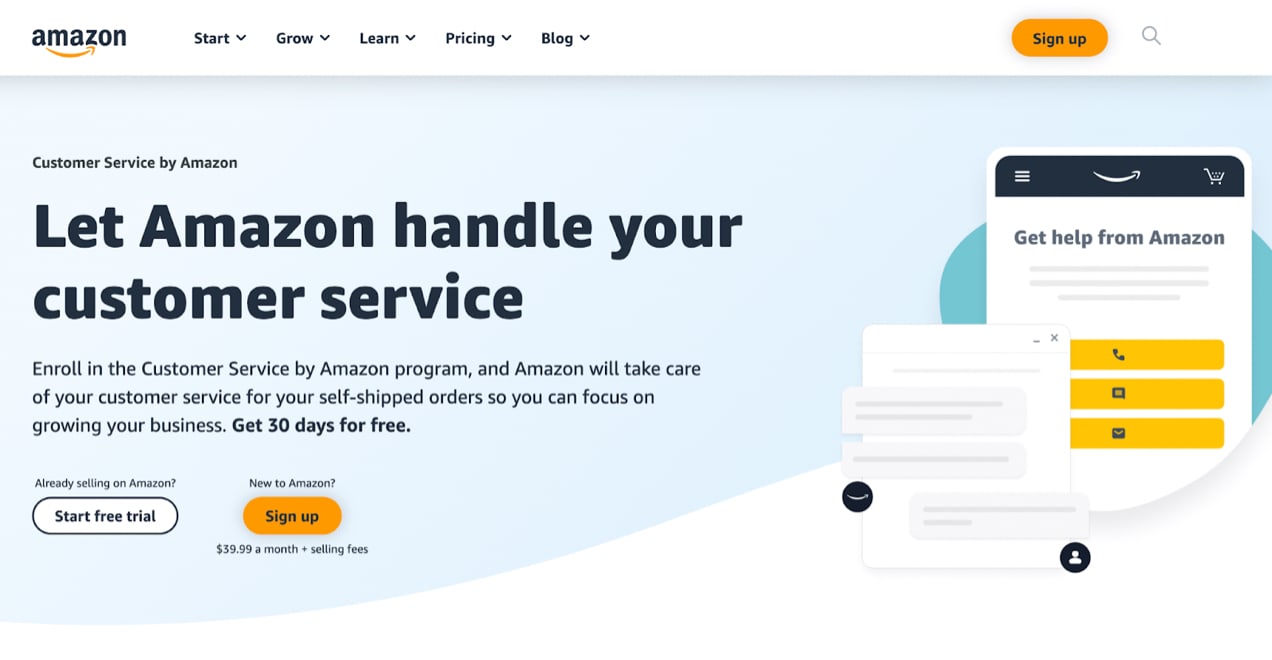
For instance, you could sign up for Customer Service by Amazon, if you’re using this popular marketplace. Amazon can field your customer inquiries 24/7 via phone, chat, or email.
If you don’t quite have the budget to outsource this service, you can always handle all customer queries in-house. It’s important that you answer promptly and be as helpful as possible. You’ll also want to process returns and refunds efficiently, and make sure your customers feel valued.
Additionally, you might consider creating an FAQ section so that customers know what to expect from your shop. This may contain information about returns, refunds, and delivery.
6. Carefully manage your inventory
When you have a multichannel ecommerce strategy, you’ll need to manage inventory across platforms. Since doing this manually would be a bit complicated (and time-consuming), you’ll likely need to invest in dedicated software.
This kind of software enables you to sync your inventory across channels. Alternatively, you could take advantage of any services your marketplace offers. As we mentioned, Amazon can provide a complete fulfillment solution that’s compatible with WooCommerce stores.
Similarly, Walmart offers some useful solutions. For instance, you can sign up for their full-service option, which will help you handle everything from setup to inventory and fulfillment.
Properly managing your inventory can help you avoid running out of stock and disappointing customers. As a result, you’ll be better able to maximize sales and keep customers happy.
If you’re running a standalone ecommerce store with WooCommerce, you can use extensions to sync product information and inventory. This helps prevent you from selling items you don’t have in stock.
“One crucial tip for managing inventory and sales in a multichannel ecommerce business is to implement an integrated inventory management system. This system should sync inventory levels across all your sales channels in real time. It helps prevent overselling, streamlines order fulfillment, and ensure accurate stock counts.”
— Abhishek Jaiswal, CEO at CedCommerce
Additionally, if you can’t always have a surplus of inventory, you might consider other ways to manage sudden surges in sales. As an example, you could implement waitlists or limit quantities for individual customers.
7. Monitor seller ratings and reviews
When you sell your products on multiple channels, chances are you’ll be subject to ratings and reviews. While individual product reviews are important, seller ratings are equally (if not more) significant.
As you can see, Etsy makes it super easy for shoppers to toggle between product and seller reviews.
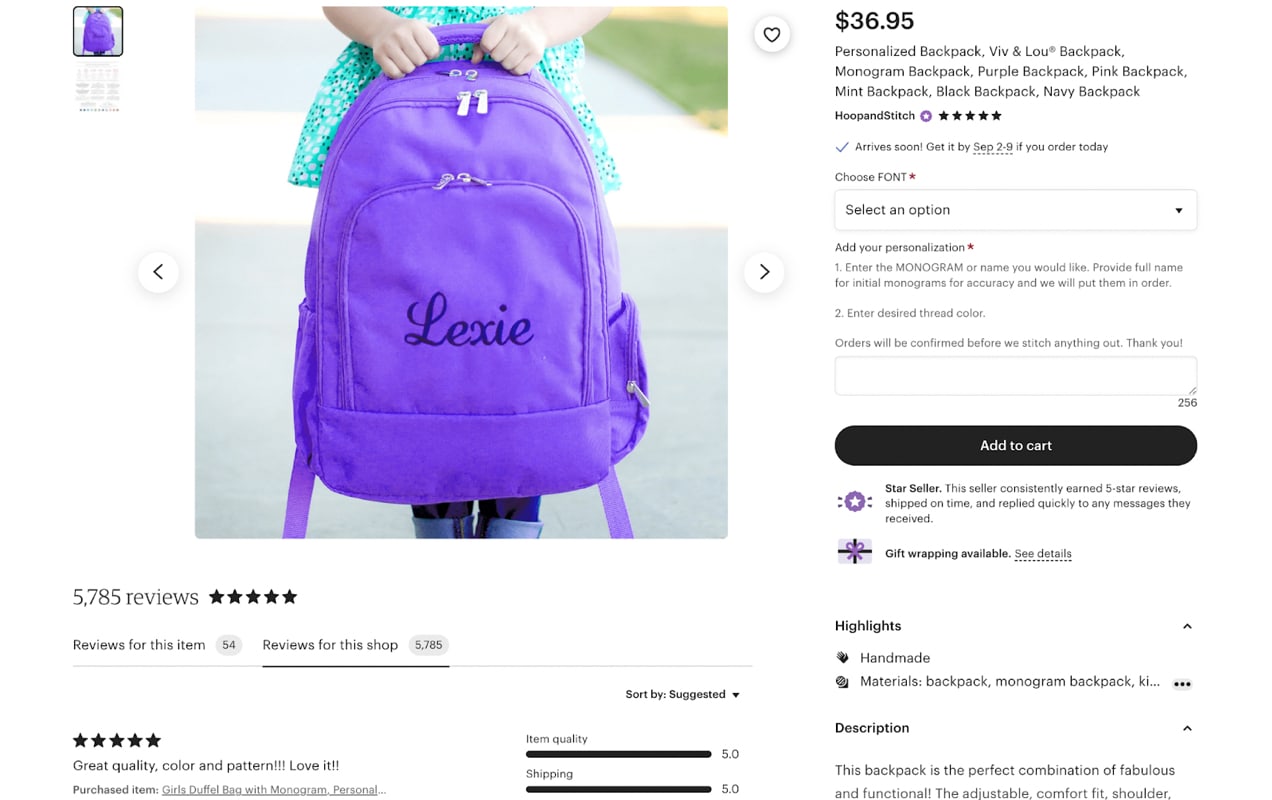
These seller reviews can make or break your business. Therefore, you’ll want to keep a close eye on them.
Consider these reviews as valuable data points that can help you improve operations, address customer concerns, and enhance your overall brand reputation.
Implementing all seven of the above strategies will help you strengthen your marketability on third party platforms. By focusing on key elements like product listings, pricing, customer service, and inventory management, you can provide a seamless and enjoyable shopping experience that will set you apart from the competition.
Strategies for measuring multichannel performance
Finally, let’s consider a few ecommerce metrics you can track and assess in order to see how your multichannel strategy is panning out.
Start with simple conversions and steady growth
First and foremost, you’ll want to measure your conversions across the channels you use. Mainly, we’re referring to sales, but you could also monitor other conversions.
For instance, someone following your shop could be considered a type of conversion.
You may hear all kinds of complicated terms when it comes to analytics for your store and customer journey. But when you’re first starting, don’t get caught up in every available metric — instead focus on simple improvements in product views and sales conversions. As you grow, you can implement more detailed tracking and measurements of things like return on ad spend to optimize individual campaigns.
You can also calculate the gross profit margin of each channel. Plus, if you have the means, you can track and compare smaller conversions like follows, visits, views, clicks, etc.
Determine customer acquisition cost (CAC)
As the name suggests, customer acquisition cost (CAC) refers to the price associated with winning over a new customer. To calculate it, you’ll need to determine the total cost of sales, marketing, and operations, divided by the total number of new customers you get.
When it comes to a multichannel strategy, make sure you include things like marketplace fees and commissions.
If you’re attempting to expand your Woo store to multiple channels, it can be useful to determine the CAC for each of them, and then compare your results. In some cases, it might be better to only use the sales channels that are performing best. Otherwise, you may end up spreading your resources too thin.
Track customer value
When measuring multichannel performance, it’s also a good idea to look more closely at individual customer data and orders. Here are a few ecommerce metrics to consider:
- Average order value (AOV). This is the median price of all orders. Naturally, the higher this number, the better.
- Repeat purchases. Also referred to as “return customers”, this is a good way to assess customer retention. You want as many repeat customers as possible.
- Customer lifetime value (CLV). This is the total revenue you expect to earn from a customer. When calculating this, you must consider a customer’s AOV and average duration of their relationship with your brand. You might need to wait a while before you can calculate this metric, but it can be very useful.
These are just a few of the most useful metrics for measuring the performance of your multichannel strategy. Again, don’t let analytics overwhelm you as you get started. Focus on the basics and expand your measurements as you gain experience.
Conduct customer satisfaction surveys
As we mentioned earlier, monitoring seller reviews can provide you with the information and insight you need to improve your business. This type of qualitative information is crucial if you’re serious about multichannel retail.
You may want to take things a step further and conduct customer satisfaction surveys. The method you use will vary depending on your marketplace.
If you want to incentivize shoppers to fill out your survey, you could offer a one-time discount or deal. Once you’ve collected your data, you can compare what’s working and what isn’t on each marketplace.
Get started with multichannel retail
If you’re ready to grow your WooCommerce business, developing a multichannel ecommerce strategy might be the ticket. It’s important that you choose the right marketplaces, but you always want to ensure that you’re able to make a profit considering all the added costs associated with third party platforms.
Take the time to research and choose the right platforms and build a convincing seller profile with strong product listings. Be willing to make some early sacrifices to build your reputation and focus on consistent growth and, just as you’ve grown your WooCommerce store, you can expand your success to outside marketplaces.
Are you ready to launch your multichannel ecommerce strategy with WooCommerce? Check out the available WooCommerce extensions for sales channels!
